Soft Sourdough Cinnamon Rolls
Equipment
- 3/4 L Weck jar (for your starter)
- Tovolo spatula (to feed your starter)
- Stand mixer (with dough hook)
- Pizza Cutter (or pastry wheel)
- 16" x 10" baking pan (interior dimensions: 13.75" x 10") | (9" x 13" also works)
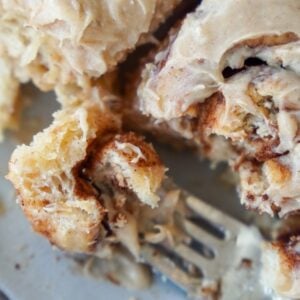
Ingredients
Stiff Sweet Starter
- 25 g sourdough starter (ideally, fed within the last day – needs to be healthy!)
- 25 g sugar (or honey)
- 50 g warm water
- 100 g bread flour
Tangzhong
- 35 g bread flour
- 175 g whole milk
Main Dough
- All of the stiff sweet starter
- All of the tangzhong
- 80 g whole milk
- 100 g cool water
- 1 egg
- 5 g vanilla extract
- 25 g sugar
- 515 g bread flour
- 3 g cinnamon (optional)
- 12 g sea salt
- 84 g unsalted butter, softened
- 85 g half & half (for pouring over the rolls)
Filling
- 142 g unsalted butter, softened
- 175 g brown sugar
- 16 g cinnamon
Cream Cheese Icing (Option 1)
- 28 g unsalted butter, softened
- 170 g cream cheese, softened
- 250 g powdered sugar
- 1 tsp vanilla extract
- 1 tsp cinnamon (optional)
- Pinch of salt
Maple Pecan Glaze (Option 2)
- 100 g chopped pecans (optional)
- 28 g butter
- 20 g maple syrup
- 100 g powdered sugar
- 5 g vanilla extract
- Flaky sea salt (for finishing)
Instructions
- Before you begin: This is a 3-day process, so plan accordingly (See Notes)! Also, this recipe has two topping options: a classic cream cheese icing or a maple pecan glaze. Choose one (not both!).
Make the Stiff Sweet Starter
- In the early evening (5-8pm), mix 25 g sourdough starter, 25 g sugar, 50 g warm water, and 100 g bread flour until it forms a ball. Knead outside of the jar to fully incorporate the ingredients. Cover loosely and let ferment in a warm place until morning. See Notes for timing and tips.
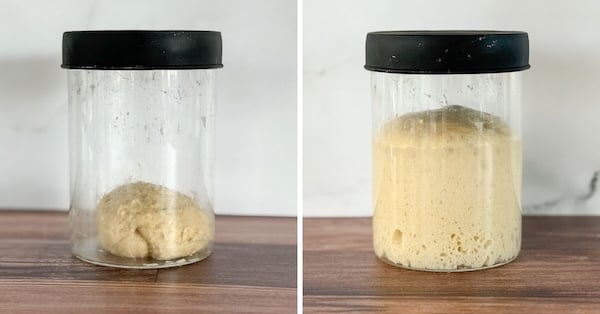
- Set out your butter for the main dough so it's softened by morning.
- Note: You can make the tangzhong (see next step) right now and refrigerate it overnight, if preferred.
Make the Tangzhong
- In the morning, mix 35 g bread flour and 175 g whole milk in a microwave-safe bowl. Microwave in 30-second intervals, stirring between each, until thickened and reaches 150°F (65°C). For me, it usually takes 3-5 rounds to finish.
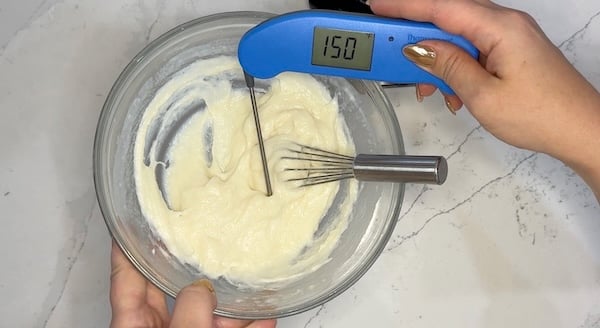
- Let rest on the counter (or in the fridge) until the mixture has cooled down to below 80°F (26°C). If it's too hot, it can kill your starter or scramble the egg in the dough.
Make the Dough
- In stand mixer bowl fitted with a dough hook, combine All of the stiff sweet starter, All of the tangzhong, 100 g cool water, 80 g whole milk, 1 egg, 5 g vanilla extract, 25 g sugar, 515 g bread flour, 3 g cinnamon, and 12 g sea salt. Mix on low 2-3 minutes until incorporated, then medium-low 7-15 minutes until smooth.Note: Lower wattage stand mixers (250-325W) may need 15-20 minute rest breaks if they get hot. They may also take double or even triple the time estimates referenced here. You can finish with hand kneading if your machine isn't getting the job done. Higher wattage mixers (500-650W) typically don't need pauses and should get the job done in the times referenced here.
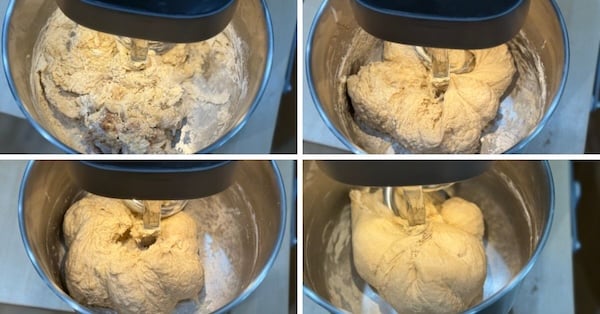
- Reduce to low speed and add 84 g unsalted butter, softened, one pat at a time, waiting for incorporation between additions. Mix 2 minutes more until very smooth.
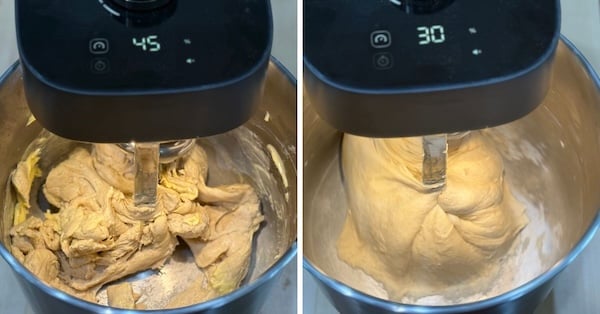
First Rise
- Transfer your soft, smooth dough to a lightly oiled bowl, cover, and let rise in a warm place (75-85°F/24-29°C) until risen by about 30% and small bubbles appear around the sides of the bowl (3-6 hours).
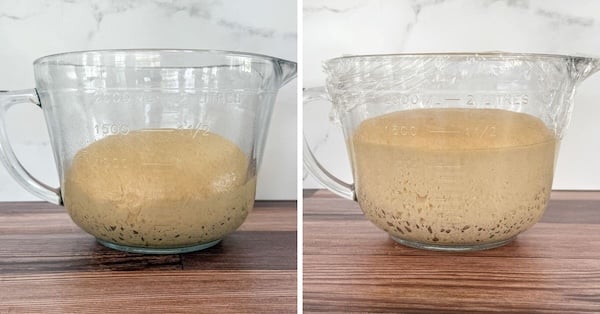
- Place the bowl of dough in the fridge until bedtime. Also, set out your stick of butter so it's ready to make your filling later!
Shape the Rolls
- Right before bed, pull your chilled dough out of the fridge. In a medium-sized bowl, whisk together your filling: 142 g unsalted butter, softened, 175 g brown sugar, and 16 g cinnamon.
- Generously flour your work surface and dump out the dough. Flour the top of your dough.
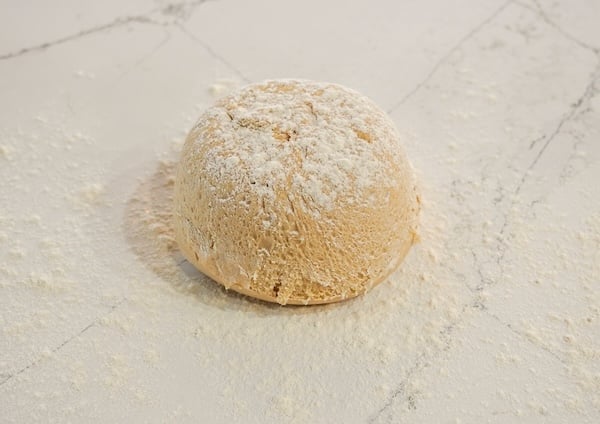
- Roll into a rectangle that’s about ¼” thick. Aim for the width of the rectangle to be between 18-24″. While you roll, lift the sheet of dough regularly to prevent sticking; push additional flour underneath with a bench scraper as needed.
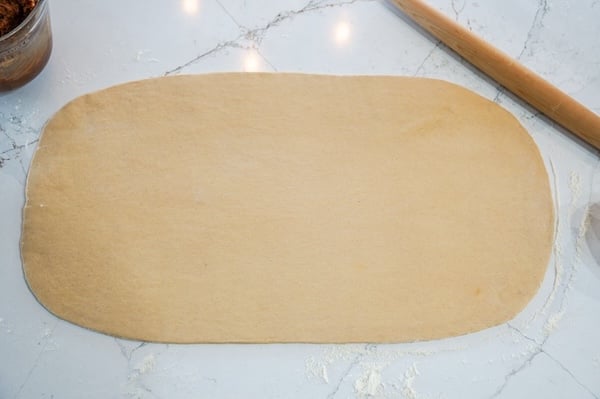
- Spread filling on dough with a spatula, leaving a 1-inch gap at top.
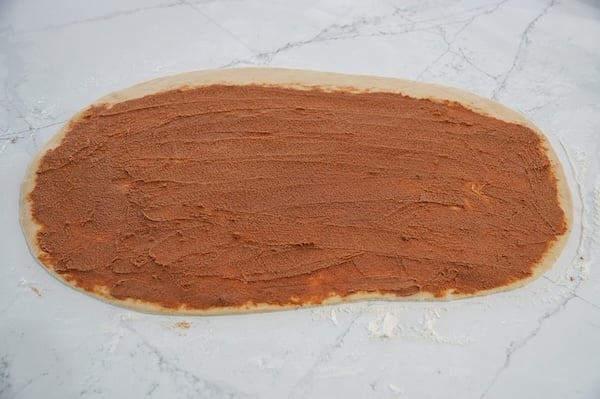
- Use a pizza cutter or pastry wheel to cut the sheet in half.
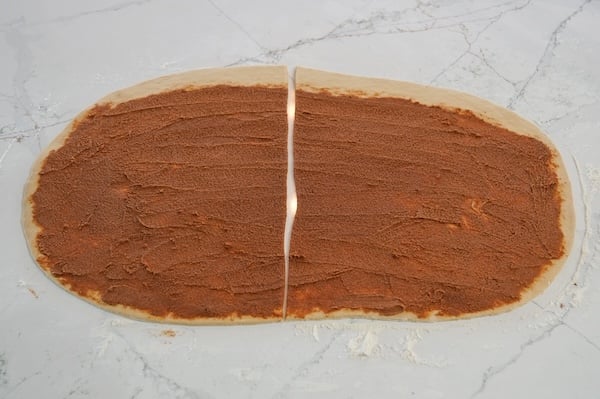
- Then, cut each half in half again (to make four sheets).
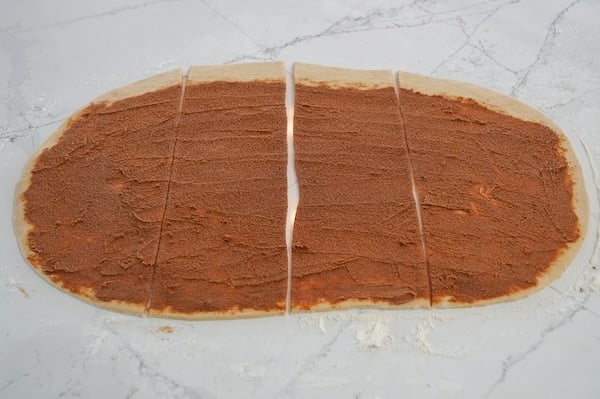
- Now, each sheet can be cut into three equal strips.
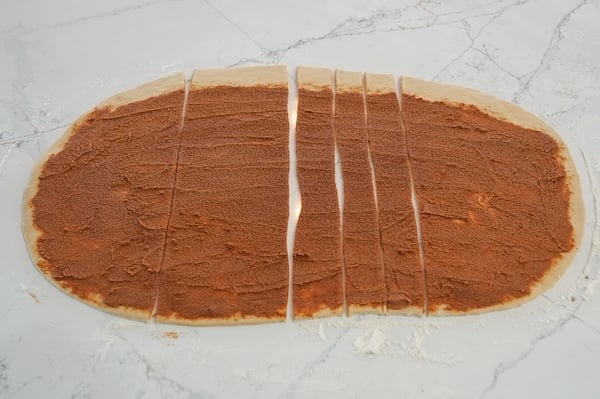
- This will make a total of 12 cinnamon rolls that are ideally 1.5-2″ wide. Cut a little off each side to keep the strips tidy.
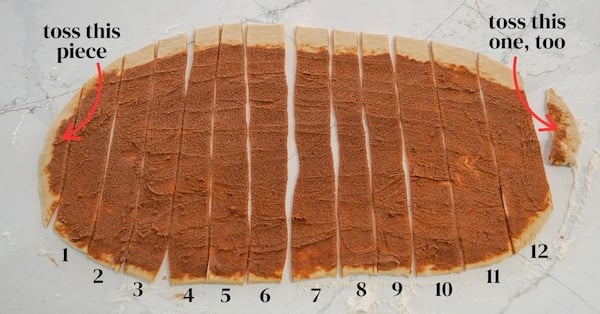
- Roll up your strips, brushing a little milk or cream along the top edge to help the dough seal to itself.
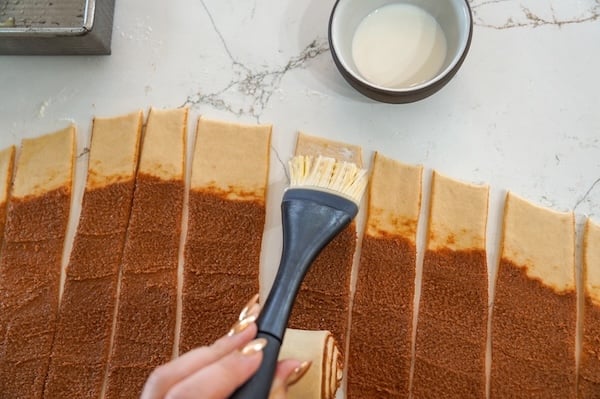
Second Rise
- Place your cinnamon rolls in a greased baking pan, cover with plastic wrap, and let proof on the counter overnight. This worked great for me doing about 10 hours at 70-74°F (21-23°C). And honestly, I could have gone a little longer – there's wiggle room in the proofing time with these!
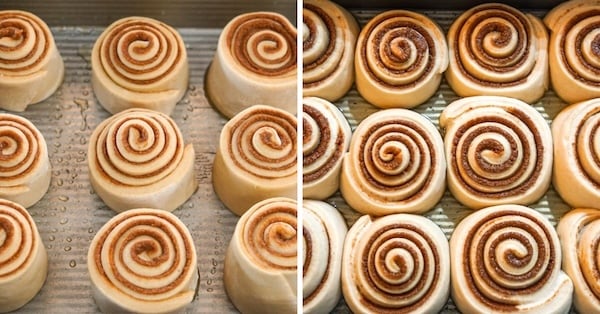
- Try not to go above 77°F (25°C), or the butter may melt out of the rolls, puddling in the bottom of the pan. You also risk slight overproofing.
- If making the cream cheese icing, set out your cream cheese and butter so they're softened by the morning.
Bake
- In the morning, preheat your oven to 350°F (175°C). Pour 85 g half & half over the cinnamon rolls and bake for 30-35 minutes, or until the internal temperature is around 195°F (90°C). Toward the end of baking, if rolls are getting too dark, tent with foil.
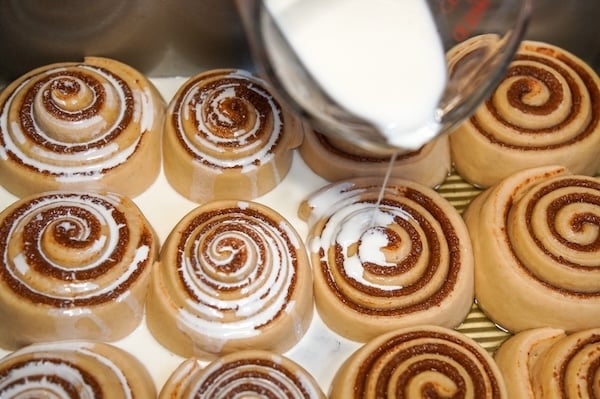
Icing or Glaze
- While the rolls are baking, make your icing or glaze – there are two options to choose from! The first is a classic cream cheese icing, and the second is a maple pecan glaze.
- Icing (Option 1): Whisk together 28 g unsalted butter, softened, 170 g cream cheese, softened, 1 tsp vanilla extract, and 1 tsp cinnamon. Then, add 250 g powdered sugar and a Pinch of salt. Note: 59% of recipe testers loved the icing amount as written, while 37% would reduce it—28% by a quarter and 9% would cut it in half. Adjust accordingly.
- Glaze (Option 2): In a medium saucepan over medium heat, dry roast 100 g chopped pecans for 3-4 minutes, or until fragrant. Remove and set aside. In the now-empty saucepan, add 28 g butter. Brown the butter for 2-4 minutes, or until deep golden brown and very fragrant (will smell nutty). Take off heat and stir in 20 g maple syrup, 100 g powdered sugar, and 5 g vanilla extract. Brush most of the glaze on the warm cinnamon rolls. Add the roasted pecans back to the pan, tossing them in the remaining glaze. Sprinkle candied pecans over cinnamon rolls. Top with Flaky sea salt.
- When the cinnamon rolls are finished, let cool for about 10 minutes before adding your icing or glaze. Enjoy!
Storage
- Store un-iced rolls covered at room temperature for up to 3 days (store cream cheese icing separately in fridge), or refrigerate iced rolls for up to 5 days.
- For longer storage, freeze baked rolls (wrapped well) for up to 3 months—thaw in fridge overnight and reheat at 350°F (175°C) for 15-20 minutes. You can also freeze unbaked shaped rolls and let them thaw/rise overnight on the counter before baking. Reheat any stored rolls briefly in the microwave or warm oven to restore softness.
Video
Notes
Half and half is a US dairy product that's half milk, half cream (10-12% fat). Substitute with single cream, or mix equal parts whole milk and heavy cream.
For Sunday morning cinnamon rolls: make your stiff sweet starter Friday evening, mix the dough Saturday morning, refrigerate it around lunchtime, shape the rolls before bed Saturday night, and bake Sunday morning.
Altering the timeline: if you want cinnamon rolls bake-ready in the evening, leave your dough in the fridge until the following morning. Shape your cinnamon rolls in the morning and let them rise on the counter during the day; bake in the evening.
No icing or glaze: some recipe testers prefer no topping on their cinnamon rolls – if that's you, increase the sugar in the main dough from 25g to 75g.
Stiff sweet starter: It takes 10-16 hours to peak (less time if your home is warm, more time if your home is cool), so I suggest feeding your starter before or around dinnertime (aim for 5-8pm; the earlier the better). It's better to use a past peak starter than one that's still rising (been there, done that, and you'll have a huge headache!). Before using your stiff sweet starter in this recipe, ensure it has tripled in size, smells sweet and yeasty, and has tons of bubbles all around the jar and on the surface. If it isn't there yet, put in a warm place and give it a few more hours. Then, start the recipe.
Nutrition facts are based on the cream cheese icing option.
Nutrition
Serving: 1 cinnamon rollCalories: 552kcalCarbohydrates: 83gProtein: 10gFat: 20gSaturated Fat: 12gPolyunsaturated Fat: 1gMonounsaturated Fat: 5gTrans Fat: 1gCholesterol: 66mgSodium: 647mgPotassium: 175mgFiber: 2gSugar: 41gVitamin A: 622IUVitamin C: 0.1mgCalcium: 129mgIron: 1mg